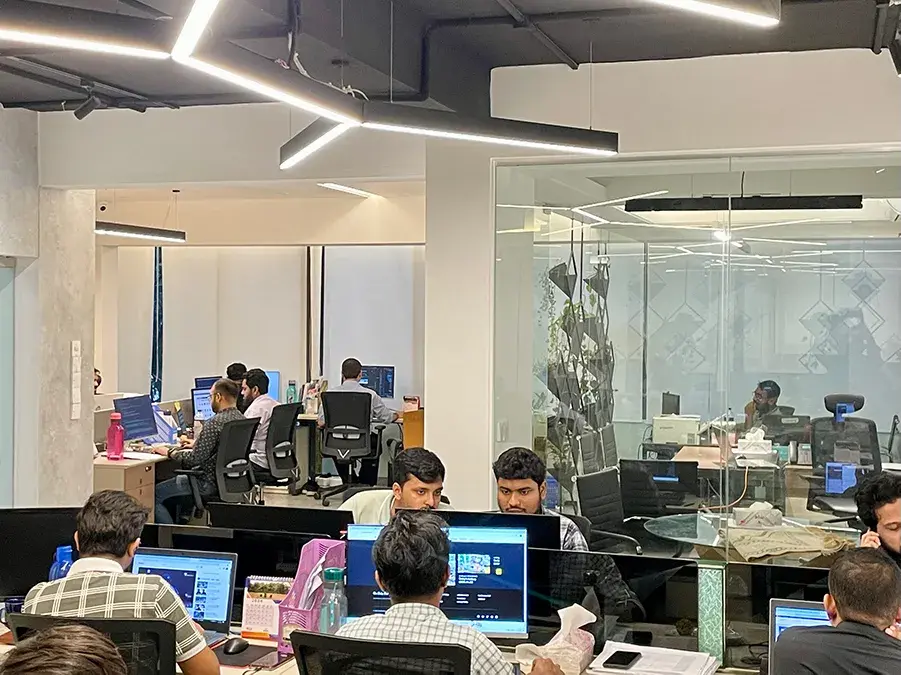
AI vs AI Security Battles: How defenders can use AI against AI-powered cybercriminals
The cybersecurity battlefield has changed dramatically in recent years. Artificial Intelligence (AI) is no longer just a tool for innovation; it has become a weapon. Cybercriminals are increasingly using AI to launch faster, smarter, and more deceptive attacks. From deepfake scams that mimic human voices to adaptive malware that learns in real-time, the threat landscape is evolving at an unprecedented pace.
However, the same technology that fuels these advanced attacks is also emerging as the ultimate defense mechanism. Security teams worldwide are now leveraging AI to predict, detect, and neutralize these threats before they cause irreversible damage.
The New Threat: AI-Powered Cybercrime
- Deepfake Phishing & Voice Cloning: Cybercriminals can now create hyper-realistic fake videos, audio messages, or emails that impersonate CEOs, coworkers, or loved ones, tricking victims into sharing sensitive data or money.
AI-Driven Malware: Malware that learns and adapts, changing its code automatically to avoid detection by traditional antivirus systems.
Automated Credential Stuffing: AI bots can test millions of username-password combinations across platforms in minutes, exploiting weak or reused credentials.
Predictive Social Engineering: Machine learning models analyze user behavior online to create highly personalized scams.
The Concept of AI vs. AI in Cybersecurity
This is no longer a fight between humans and machines; it's AI versus AI. On one side, cybercriminals deploy AI to break defenses and exploit vulnerabilities. On the other, defenders are building AI-driven security.
Analyze billions of data points in real time.
Detecting anomalies faster than humans ever could.
Automate response to reduce reaction time from hours to seconds.
Offensive AI
Generating convincing attacks: Detail how AI creates realistic deepfakes, voice clones, and hyper-personalized phishing emails that bypass traditional filters.
Developing adaptive malware: Describe AI-powered malware that uses reinforcement learning to modify its code and behavior to evade detection.
Automating reconnaissance and exploits: Explain how AI can autonomously scan systems for vulnerabilities, enabling attackers to scale their operations faster than ever.
Defensive AI
Real-time threat detection: Explain how AI-powered User and Entity Behavior Analytics (UEBA) can detect subtle anomalies in network traffic and user behavior that indicate a threat.
Automated response and mitigation: Show how AI can respond instantly to threats by isolating compromised endpoints or blocking malicious traffic, freeing up security analysts.
Predictive analytics and threat hunting: Detail how defensive AI can analyze historical data to predict attack scenarios and proactively hunt for hidden threats.
Enhanced phishing and spam detection: Cover how advanced AI email filters can analyze context, tone, and intent to block AI-generated phishing attempts.
How Defenders Can Use AI to Fight Back
AI-Powered Threat Detection: Machine learning algorithms analyze traffic, system logs, and user activity to spot suspicious patterns that indicate an attack even ones never seen before.
Behavioral Analysis & Anomaly Detection: Instead of relying solely on known malware signatures, AI monitors user behavior to detect sudden deviations, such as unusual login times or abnormal data transfers.
Automated Incident Response: AI tools can instantly isolate infected systems, block malicious IP addresses, or reset compromised accounts without waiting for human intervention.
Predictive Security: By analyzing historical attack data, AI can forecast potential attack vectors and proactively strengthen defenses before a breach occurs.
Deepfake & Phishing Detection: Natural Language Processing (NLP) models identify fake or manipulated communications whether it’s a cloned voice message or a suspicious email.
Protective measures against specific threats:
Anti-phishing: Detail how advanced AI filters analyze context, sender behavior, and emotional cues to block advanced, AI-generated phishing attempts.
Deepfake detection: Explain the use of AI to analyze the subtle inconsistencies in deepfake videos and audio, such as unnatural blinking patterns or voice distortions.
Challenges in AI-Powered Defense
False Positives: AI systems may flag harmless activity as threats, causing unnecessary alerts.
Data Privacy Concerns: Training AI models often requires massive datasets, some of which may contain sensitive information.
Adaptive Cybercriminals: Attackers can train their own AI to bypass defensive algorithms.
Skill Gaps: Organizations often lack professionals trained in both cybersecurity and AI.
The Future of AI Cybersecurity
AI Red Teams vs. AI Blue Teams: Offensive and defensive AI systems competing in real time.
Generative AI Honeypots: Fake systems designed to lure and study cybercriminal AI.
Quantum Computing Impact: Faster decryption and more advanced AI training, forcing defenders to adopt quantum-safe measures.
AI is redefining both sides of cybersecurity; attackers now use it to create intelligent, adaptive threats, but defenders can wield the same power to outsmart them. The key lies in early adoption, continuous improvement, and a mindset shift; defense must now operate at machine speed.








